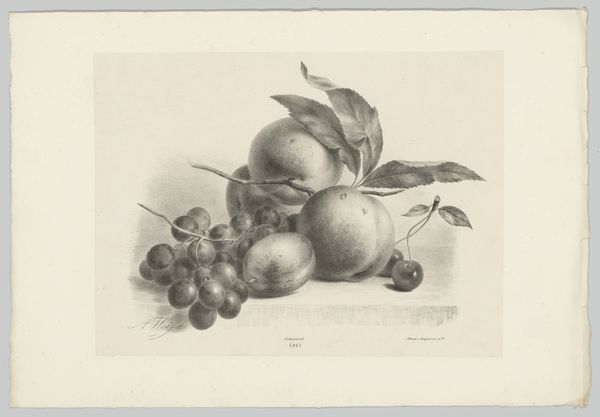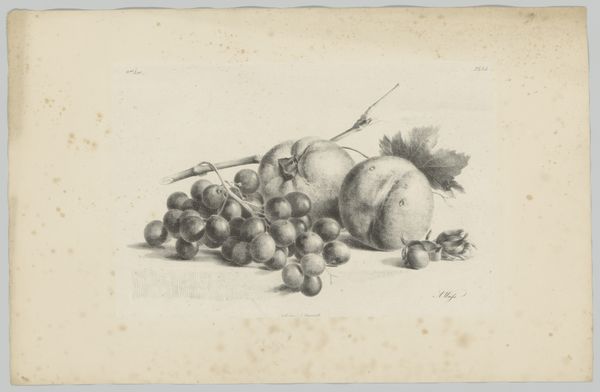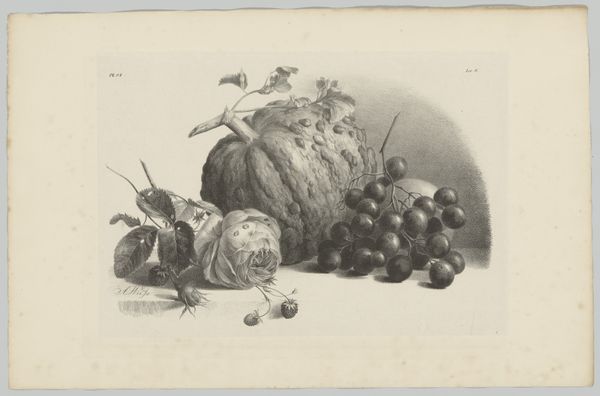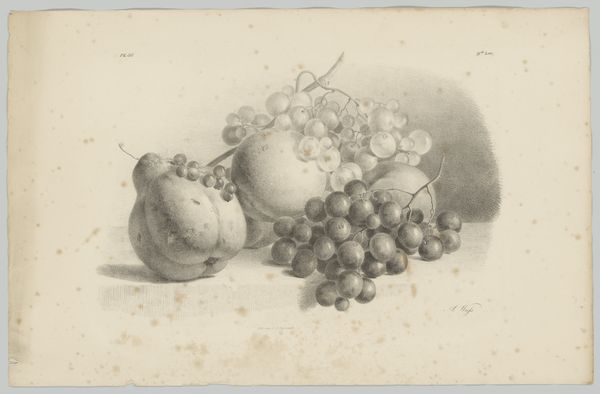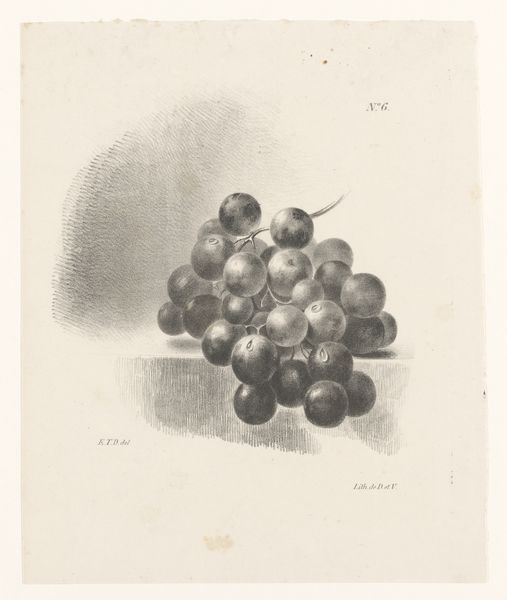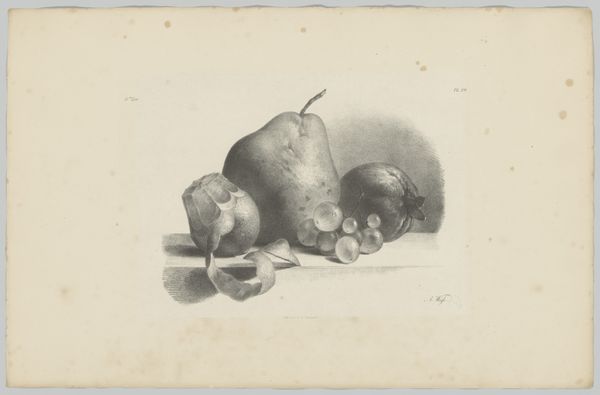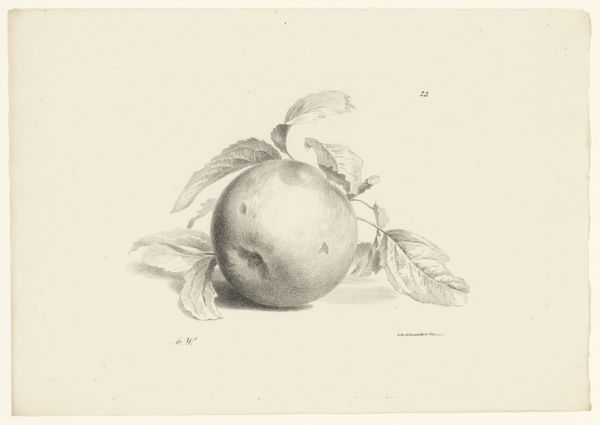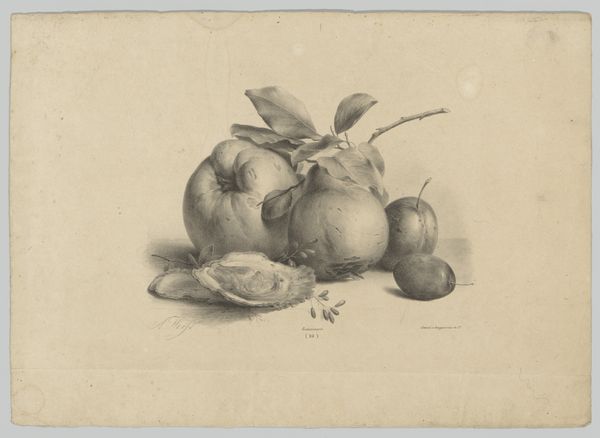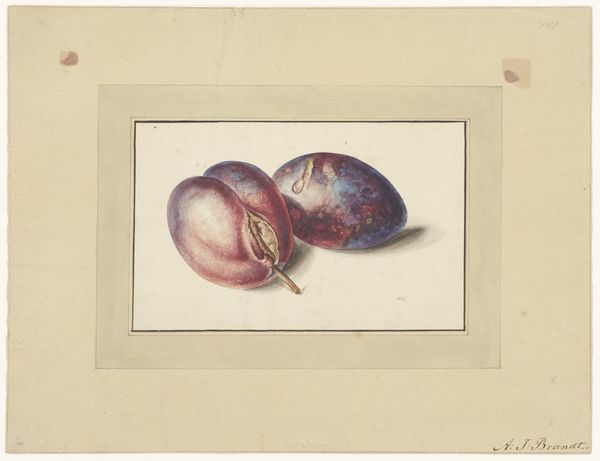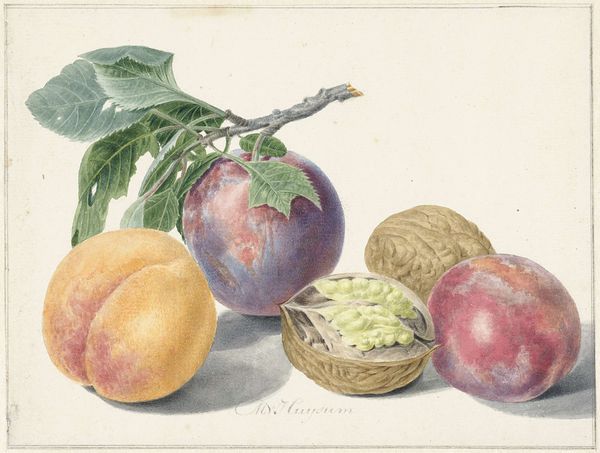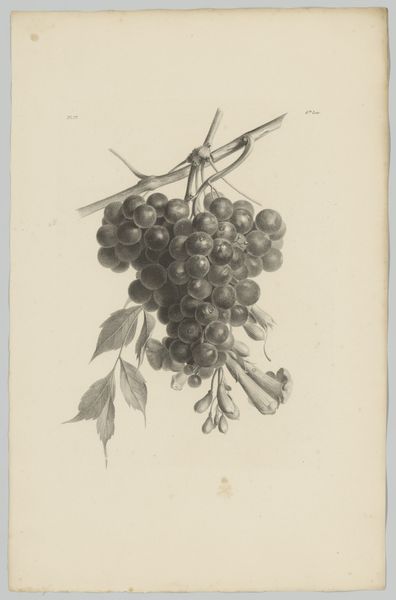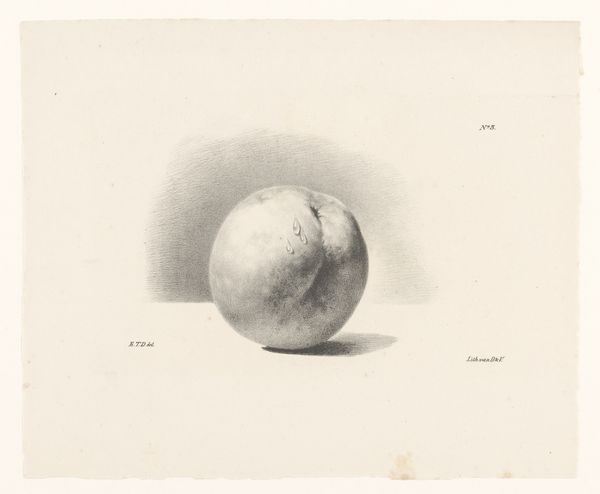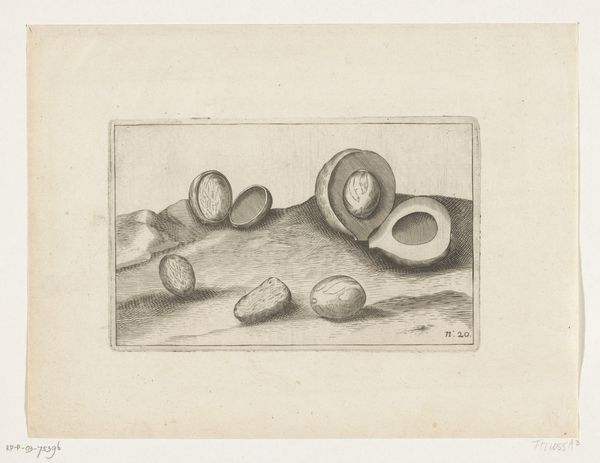
drawing, lithograph, pencil
#
pencil drawn
#
drawing
#
lithograph
#
pencil sketch
#
pencil drawing
#
pencil
#
realism
Dimensions: height 210 mm, width 255 mm
Copyright: Rijks Museum: Open Domain
Editor: Here we have Elise Therèse Daiwaille’s "Plums on Branches," likely created sometime between 1824 and 1881. It's a drawing rendered in pencil and lithograph. The realism is quite striking. What catches your eye in terms of its composition? Curator: The careful rendering of light and shadow is immediately apparent. Note how Daiwaille utilizes hatching and stippling to define the contours and volume of the plums and leaves. It's a study in tonal gradation. Consider the artist's manipulation of light across the spherical forms. What effect does this strategic placement create? Editor: It makes them look almost photographic, emphasizing their roundness and texture. I'm wondering about the almost clinical approach to still life here; the artist seemingly wanting to focus on the surface. Curator: Precisely. One could even argue the leaves themselves function semiotically. Each displays its own distinct surface. It's not about the plums alone, is it? Daiwaille transforms everyday objects into purely aesthetic forms. Is there a potential geometric component? Editor: Interesting! So, by studying these details closely, it suggests Daiwaille sees beyond the natural form, focusing instead on geometric relationships in the rendering of tone and texture? Curator: Indeed. It's in the subtle variances that deeper consideration arises. Consider how an emphasis on only one would undermine the work entirely. Editor: That’s a different approach than I initially had; I didn't notice all that the first time around! Thanks for pointing it out! Curator: A pleasure. This reminds us of the power of close observation, which is crucial in any effective rendering.
Comments
No comments
Be the first to comment and join the conversation on the ultimate creative platform.
